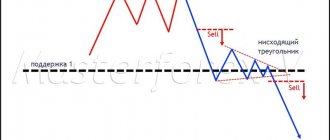Elena Pazina
8999
0
Font
A.A.
No time to read?
Oil sales are still one of the main sources of income for the Russian budget. In many ways, the price of oil has long determined the country’s economy, which in 2014 resulted in a catastrophic result. The price of oil on the world market has fallen sharply, forcing the state to look for side ways to increase revenue. This led to a sharp increase in the exchange rate of the dollar and euro and the collapse of the ruble. Under these conditions, the oil price forecast for 2021 worries not only financiers, but also ordinary citizens.
Deal with a plus
The OPEC+ production limitation agreement, which involves 24 countries (Saudi Arabia and the rest of OPEC members, as well as Russia and other oil-producing states), remains the main factor stabilizing the global oil market.
In July of this year, the parties to the deal agreed to limit production by 1.2 million barrels per day over the next 9 months, and in December they decided to remove another half a million barrels from the market in the first quarter of 2021. Thus, from January 1, the total volume of restrictions will be 1.7 million barrels per day. Russia will account for 300 thousand barrels of this volume. “There were a lot of scenarios considered during these two days. We came to the conclusion that during the period of falling demand in the first quarter, it would be advisable to further reduce production to balance the market. Therefore, this quota naturally applies to all countries,” said the head of the Russian Ministry of Energy, Alexander Novak.
At the same time, Moscow managed to exclude gas condensate from production volume calculations. Alexander Novak emphasized that the condensate is not exported, but is used for processing within the country. According to him, taking into account gas condensate in November, Russia did not fulfill the conditions for limiting production, but without it, it exceeded it.
No one doubted that the deal would be extended in December. Earlier, President Vladimir Putin, during his November visit to Brazil for the BRICS summit, emphasized that the agreement has become an “effective tool” for maintaining “the balance that everyone needs - both consumers of energy resources and their producers - in the global energy market.” It is also worth noting that in July of this year a charter was adopted on long-term cooperation between OPEC and non-OPEC countries.
Analysts are confident that there is no alternative to OPEC+ yet. The OPEC and OPEC+ deals remain the only instrument for stabilizing oil prices; no other solutions have been found yet, emphasizes Alor Broker analyst Alexey Antonov. “Russia’s withdrawal from the agreement or hints at it will lead to an immediate market reaction and an imbalance, which looks fantastic in the current realities,” he believes. Alexander Sidorov, an analyst at Veles Capital Investment Company, says that as long as the United States increases production, OPEC+ will exist. And since the potential for growth in American production is significant, the agreement will remain valid for the next few years. Its form may change, but the essence will remain: coordination of actions to reduce production and eliminate the excess supply of oil in the world.
What determines the price of oil
The cost of black gold on the world market in 2019-2020 depends on a combination of the following factors:
- Expansion of the shale oil market. The USA and Canada are actively developing, producing and selling hydrocarbons from shale deposits. International agreements do not apply to this type of oil products, so their presence on the market increases competition and leads to a drop in prices.
- Popularization of alternative types of energy. States are trying to reduce oil consumption. That's why there are cars that use gas and electricity. To stimulate the transition to electric cars, customs duties are being reduced and the tax burden is being eased.
- Refusal to comply with international agreements. Not all oil-producing countries adhere to the policies adopted by OPEC countries for 2021. This upsets the balance, creating a rush that leads to increased production and lower prices.
- Sanctions. A number of states cannot consume as much oil as they need due to restrictions imposed on them on the supply of black gold and technological equipment, as well as increased duties.
- Introduction of new quotas. OPEC countries regularly review the volume of oil produced in order to develop the best production/price ratio.
- Changes in the cost of a produced barrel of oil, which includes the development of new deposits, production, construction of new plants, modernization of production, etc.
Oil producing companies in Russia impose additional costs in the form of growing excise taxes, taxes on the use of minerals, etc. These factors greatly increase production costs, creating unequal competitive conditions for Russian enterprises on the world market.
Drone attack
Vladimir Putin in Brazil, commenting on the OPEC+ deal, also said that Saudi Arabia is interested in its extension. The Kingdom has scheduled an IPO of its oil and gas company Saudi Aramco for November-December 2021, and it does not need the situation of an unbalanced market with fallen prices. “We understand why such a tough position is connected, including that of our friends in Saudi Arabia, with the Aramco IPO. Everyone understands this, this is an open secret, but it doesn’t matter. They have their own current interests, and we must treat - and we do - this with respect,” said Vladimir Putin.
But unlike Russia, not everyone respected Saudi Arabia’s plans. In the summer, oil tankers were attacked in the Gulf of Oman, and in September of this year, Saudi Aramco oil and gas infrastructure facilities - the Abqaiq and Khurais fields - were attacked with the help of drones. Riyadh had to cut production, which led to a jump in oil exchange prices by about ten dollars. The price of Brent at some points in trading reached $72 per barrel. But it quickly became clear that the attacks did not cause significant damage and Saudi Arabia would quickly restore the losses. There was a risk that the US and allies would launch a military strike against Iran, which they blamed for the attack (although Yemen's Houthis, against whom Riyadh is waging a military campaign, claimed responsibility), but common sense prevailed and the risk of a major war in the Middle East filmed for now.
As for the IPO, it took place as planned. Saudi Aramco announced the placement parameters on December 5th. Retail investors will be able to buy 0.5% of the company's shares, while institutional investors will receive 1%. The 1.5% placement is expected to bring the Saudis at least $25.6 billion. This will become the most expensive IPO in history (the previous record of $25 billion belonged to the Chinese Alibaba), and Saudi Aramco with a capitalization of $1.7 trillion will be the most expensive company in the world, overtaking Apple ($1.2 trillion).
The Saudi company also drew conclusions from the drone attack. According to Reuters, Saudi Aramco is in talks with the world's largest insurance companies to insure its oil facilities in the event of war and terrorism. Agency sources report that damage from the September attack is estimated at $533 million.
America rocks
While Saudi Arabia and Russia are trying to balance the oil market, the United States continues to destabilize it by increasing oil production and exports from shale fields. According to the US Energy Information Administration (EIA), this year the average production is 12.29 million barrels per day, compared to 10.99 million barrels last year and 9.35 in 2017. In November of this year, production exceeded 13 million barrels per day.
However, voices are constantly heard in the market that it will no longer be possible to increase production at the same pace. According to the American publication The Wall Street Journal, the flow rate of previously drilled wells is decreasing, and the return of new ones is less than before. This year, each new well is producing 12% less oil in the first five months of operation than those drilled in 2021, and 16% less than 2021.
While Saudi Arabia and Russia are trying to balance the oil market, the United States continues to destabilize it by increasing oil production and exports from shale fields
This is happening despite the fact that technologies are developing rapidly, work efficiency is increasing and costs are decreasing, which makes it possible to achieve profitability even at a barrel price of $40–50 or even lower. True, oil workers continue to be under serious pressure from the loans they took out in order to quickly increase drilling and production volumes. According to the law firm Haynes and Boone LLP, since 2015 there have been 192 bankruptcies of exploration and production companies, totaling $106.8 billion in debt. In addition, 185 oil service companies with $65 billion in debt have declared themselves insolvent.
Bloomberg recently reported that OPEC is confident that the golden age of shale oil production in the United States has come to an end. But many majors, oil traders, investment funds and small speculators believe that this is not the case and continue to bet on shale.
What to expect from the oil market in 2021
Forecasts
The dynamics of demand for energy resources is influenced by many factors, including weather, the price of petroleum products, economic growth rates, etc. It is also not easy to calculate the supply.
Despite the very specific goals of OPEC+ countries and other exporters, accidents, spills, man-made and natural disasters periodically occur, which can dramatically change market conditions. Many risks have to be neglected. We will focus on the forecasts of three institutions. The IEA, OPEC and the US Department of Energy regularly publish their assessments of the future oil market and are the most authoritative organizations in this regard.
IEA
The oil market forecast from the International Energy Agency mostly concerns the assessment of the level of demand/consumption and supply/production, i.e. global balance. Recently, the problem of raw material reserves has become increasingly urgent. A group of OPEC+ countries that have entered into a pact to limit production volumes, the goal of their deal is to reduce the level of oil reserves in the main consuming countries to the level of the five-year average.
The forecast dynamics of demand according to the IEA are presented in the table below. In 2021, it is expected to increase by 1.3 million barrels per day (b/d) to 98.9 million b/d, or 1.3%. (including condensate and biofuel).
In November 2021, the OPEC+ group decided to extend the agreement to reduce production by 1.8 million bpd until the end of 2021. Thus, we can assume that the cartel’s average production will remain approximately at the October level, or 32-32.5 million bpd. The production reduction plan under the OPEC+ deal is being implemented at almost 100%.
In turn, the agency forecasts production growth in non-OPEC countries by approximately 1.6 million bpd by the end of 2021. About half of the production growth, of course, will come from the United States.
Thus, according to IEA estimates, the growth in oil production by countries outside the cartel and the OPEC+ agreement will be offset by increased demand in 2021.
It is worth noting that in November the demand growth estimate was lowered by 200 thousand b/d. Experts expect a warm winter and a slowdown in demand due to rising commodity prices. At the same time, the latest trend in production rates in US shale fields suggests that the overall increase in supply may well be higher than the growth in oil demand by about 300 thousand bpd.
OPEC
OPEC in November raised its forecast for oil demand growth in 2021 to 1.51 million bpd. On average, demand in 2021 should be 98.45 million bpd. Demand for oil from cartel countries was reduced by 0.2 million b/d to 33.2 million. This is 0.3 million b/d higher than in 2021. In the second half of the year, demand should be 34 million b/d, which is 1.4 million b/d higher than the cartel’s production level in October 2021.
Thus, when production is frozen, the cartel clearly loses market share. The lack of supply must be compensated by a decrease in inventory. At the same time, the share of suppliers not included in the OPEC+ group will increase. OPEC attributed its recent upgrade to its global demand growth forecast to stronger-than-expected oil demand in China.
In December, OPEC raised its forecasts for production growth in countries outside the cartel by 0.12 million bpd in 2021, to nearly 1 million bpd. Moreover, in the USA, production will increase by 1.05 million bpd. Of these, in shale fields, according to OPEC, production will be increased by 0.82 million bpd.
Based on the table below, the difference between OPEC oil demand and the frozen supply of 32.5 million b/d in 2018 will average 0.7 million b/d. This means that hypothetically, approximately 250 million barrels of reserves could leave the market in a year.
This also means that, other things being equal, in the first quarter. 2021 will see overproduction. Already in the second quarter. the market will be balanced.
Below in the diagram of the balance of oil production and consumption, the red line indicates the expected level of freezing of oil production by the cartel (32.5 million b/d).
At the same time, oil and petroleum product reserves in OECD countries based on the results of the third quarter. 2021 fell below 3 billion barrels (2.985 billion), still 154 million above the average over the past five years. It is this volume that may serve as a guideline for the emergence of talk about withdrawing from the deal to freeze production.
US Department of Energy
The Energy Information Agency of the US Department of Energy (EIA) forecasts not only the levels of demand and supply of raw materials, but also the average price for the year. So in 2021, the Brent price is expected to be approximately $57 per barrel. WTI will be $4 cheaper.
As for the level of consumption, according to the US Department of Energy it will increase by 1.6%, to 99.96 million bpd. Consumption is projected to be above 100 million b/d starting in Q3. Meanwhile, production will increase to 100 million bpd in the second quarter.
According to analysts from the US Department of Energy, a deficit in the global oil market will only be observed in the third quarter. due to a sharp increase in demand. At the same time, the agency predicts an increase in oil production in the United States in 2021 to 10 million bpd, against an average of 9.2 million bpd in 2017. This is the same order of numbers with the IEA forecast value. But OPEC considers such data to be a clear underestimation of American shale producers.
Dynamics of oil reserves
OPEC and the countries included in the agreement on freezing production are focused on reducing global reserves to the five-year average. We are talking about commercial stocks. In its analytical reviews, OPEC counts reserves in various countries, including reserves in tankers. But for simplicity, you can focus on their level in OECD countries.
So, commercial inventories in developed countries have been declining throughout this year. In October 2021, their level was 107 million barrels below the corresponding month in 2021, but still 137 million barrels above the 2012-2016 average (approximately 2,800 million barrels).
At the same time, reserves in North America are being reduced more rapidly than in Europe or Asia.
If we speak in terms of ensuring uninterrupted global demand, then in October inventories fell to 62.1 days. This is 2.2 days lower than the same period in 2021, but 1.8 days higher than the five-year average.
Thus, we can quite clearly understand the intentions of the OPEC+ group in terms of maintaining the deal to limit production as data on reserves becomes available. For simplicity and efficiency, you can focus on statistics from the EIA. A decrease in inventories is an indicator of the approaching talk about changing the terms of the OPEC+ deal.
Brent VS USA Oil Production
Estimating the approximate future dynamics of oil requires forecasts of oil consumption and production in different parts of the world. It so happened that after the notorious shale revolution, even despite a significant decline in commodity prices, the main driver of production is American shale producers. Looking ahead, it should be noted that one of the most important negative risks for oil dynamics in 2021 is precisely the level of raw material production in the United States.
The following chart shows a graph of Brent oil prices and production trends, expressed as a percentage of November 2014.
According to this illustration, it is clear that production follows the price of oil. However, this happens with some lag and without sudden failures due to the peculiarities of production processes. After oil fell to $27 per barrel Brent at the beginning of 2021, US production continued to decline for about 6 more months. But at the moment, American manufacturers have already fully restored production levels.
According to the forecast of the US Department of Energy, production in 2021 will exceed 10 million bpd at a price of $58-60 per barrel.
Dynamics of drilling activity
The time delay between the dynamics of oil prices and production is due to technological issues and specific investment decisions. As is known, the start of production is preceded by service drilling operations. Below is a correlation chart for active drilling rigs in North America since mid-February 2015. The volume of drilling depends on the price of oil, but this dependence is not entirely linear.
The first half of 2021 was characterized by continued growth in the number of active drilling rigs in the United States. However, in the second half of the year the situation simply stabilized. Despite the rise in oil prices, an increase in drilling activity is no longer observed. Moreover, everything cannot be attributed to a time lag. Quite a long period of time has already passed.
Positive risks for the oil market in 2021
1. Fall in production in Venezuela . The IEA predicts a decline in production in Venezuela due to political and other factors by 0.5-0.6 million bpd on average for 2021. Of course, in the medium term, OPEC partners will try to replace the loss of production, but there is a possibility that quickly this will not be possible. The worse things get in Venezuela from an economic and political point of view, the greater the positive risks for oil prices.
2. Weather phenomena . The IEA forecasts a warmer winter-spring in the northern hemisphere in 2021, resulting in fewer heating days. Considering the rather weak predictability of weather phenomena, the opposite situation, with lower average temperatures and more precipitation, can be considered a positive risk.
In addition to the risks of a cold winter, it is worth mentioning the hurricane season in the United States in the second half of the year. The shutdown of some production capacities with a relatively small drop in demand could provide significant support to oil prices. The example of 2021 is indicative.
3. Libya and Nigeria are members of OPEC, but until 2021 they did not participate in the OPEC+ deal. But starting next year, production quotas will also apply to them at the level of 1 and 1.8 million b/d, respectively. However, the political situation in these countries contributes to permanent supply disruptions. In November 2017, Libya produced 0.97 million bpd, Nigeria - 1.79 million bpd. Although these two oil producers increased production by 0.7 million bpd from spring to October, the growth looks unsustainable. This factor is poorly predictable.
4. Complication of the political situation in the Middle East , as a result of which the extraction or transportation of raw materials may be at risk. We are talking about a wide range of countries that are one way or another involved in production and logistics chains. These are Saudi Arabia, Iran, Iraq, Qatar, Yemen. The complication of the political situation both within each individual country and the deterioration of relations between them can support commodity prices.
5. Acceleration of economic growth . There is no reason to expect more rhythmic economic growth in Europe or Asia than what is already included in the forecasts of energy agencies. However, we can note the rapid progress of tax reform in the United States. This could slightly push US economic growth towards 3% y/y, which could indirectly affect increased demand. It is true that it is too early to say that the effect of tax cuts will appear in 2021.
Negative risks for the oil market in 2021
1. Acceleration of US oil production . Most analytical agencies tend to consider production in the United States to be the main negative risk for oil price dynamics. Private shale producers are persistently looking for ways to reduce production costs. There is a risk that drilling activity in the US could begin to rise again even at current oil prices. Based on the correlation diagram and the increase in hedging operations (selling long-distance futures contracts), this scenario is quite feasible.
The American shale threat has been haunting OPEC and Russian negotiators since the very inception of the idea of a pact. Today, companies such as Apache Corp, Pioneer Natural Resources or EOG Resources Inc plan to spend decades investing billions in production in America's largest oil field, the Permian.
On December 22, 2021, Donald Trump finally signed the new tax reform law. In addition to possible economic growth and a potential increase in oil demand, this step will, to one degree or another, reduce costs and lower production costs for American oil companies, further increasing their competitiveness in the global market. Formally, this is a negative factor for oil prices, but its influence is extended over time.
2. Accelerating production in Canada . There is increased drilling activity in this country, which could ultimately lead to an increase in production volumes.
3. Exit from the OPEC+ deal. It is necessary to distinguish between two scenarios. Unexpected and planned exit from the deal to limit production. The first one we cannot predict. But you can follow the second one. This may be preceded by active rhetoric from politicians from countries participating in OPEC+ and the development of an exit strategy, to which we should expect an adequate short-term reaction from oil prices. The scenario of planned termination of the collective pact can be realized if the level of reserves approaches the values targeted by the cartel.
4. Slowdown of the global economy . The risks of a slowdown in China have been discussed for years. Globalization in this case may result in a slowdown of the entire Asian region. In addition, the Fed is actively pursuing countercyclical policies, which could also help cool not only the American but also the world economy.
5. Strong growth of the dollar amid the continuation of the rate hike cycle in the United States. Tightening monetary policy in the United States will contribute to increased demand for the dollar, which will have some restraining effect on all actively traded commodities.
6. Abnormally warm weather conditions . As mentioned above, natural factors are poorly predictable. In particular, the IEA is already planning for a warmer winter and spring of 2018.
Basic scenario
The basic scenario for the development of oil price dynamics in 2021 assumes the absence of negative risks or their insignificant impact. However, even so, both OPEC and the IEA forecast a noticeable production surplus in the first quarter. 2018 _ This is largely due to the seasonal decline in demand. Raw material inventories are likely to halt their decline. As a result, locally this may have a negative impact on oil prices and general market sentiment. It is possible that Brent may drop to $56-60 early next year.
In the II quarter an increase in demand with a slight change in production will lead to market balance. This is evidenced by the forecasts of the IEA and OPEC. The US Department of Energy believes that production will exceed consumption by about 0.5 million bpd. The seasonal decline in inventories should resume and last until the fourth quarter.
In the base scenario, taking into account the forecast growth in production in North America and the absence of negative risks, Brent prices could return to around $65 per barrel. At the same time, we note that in the first two quarters, deviations from expected temperature conditions in the northern hemisphere will play an important role among the risks, in one direction or another.
In the third quarter in the absence of negative risks, all analytical agencies predict a deficit in the oil market, on average at approximately 0.65 million bpd. OPEC is the most optimistic with an indicator of 1.5 million bpd. A conservative forecast, which, in our opinion, most realistically reflects the situation on the market, was presented by the US Department of Energy. According to him, in the third quarter. the deficit will be 0.25 million bpd.
This moment may become the apogee of growth in oil prices. Considering the expected positive dynamics at the end of the second quarter. it is possible that the price will be around $70 per barrel or even higher, but only in the short term.
During the period of shortage (from the end of the second quarter to the end of the third quarter) and due to the freezing of oil production levels as part of the OPEC+ deal, reserves could be reduced by 60 million barrels based on the average deficit (according to the IEA, EIA, OPEC). This is not enough to reduce inventories in OECD countries to 5-year average levels, but it is enough to spark discussion about an exit strategy from the OPEC+ deal. This news background will put pressure on quotes, which may return below $65-63 at the beginning of the fourth quarter.
In the IV quarter . According to the IEA and OPEC, the market will remain generally balanced with a possible slight deficit. Again, the US Department of Energy forecast indicates a return to slight overproduction, according to the current estimate - 0.35 million bpd.
According to OPEC+ plans, the deal to limit production has been extended until the end of 2021. Based on this, only the cartel itself predicts a deficit for the entire 2021 at the level of 0.7 million bpd. The EIA and IEA do not believe the market will be balanced, mainly due to rising production in the US.
Thus, throughout the year the market will be more sensitive to data on drilling activity in North America and growth in US oil production than to the dynamics of inventories.
Negative scenario
The negative scenario is mainly based on the occurrence of a number of relevant risks. First of all, these are supply risks, namely the acceleration of production in North America as a whole. That is, the rate of increase in supply will steadily outpace the rate of growth in demand. This will interfere with the balancing of the oil market. In this situation, we may see a noticeable adjustment in oil prices relative to today's levels. Alternatively, a fall to $50-54 in Brent is possible.
Any signs of disagreement in the OPEC+ deal could also hit prices hard, as the foundations for a new price war, coupled with a race to increase production, would immediately begin to be laid. This is not the most likely scenario, but its implementation could lower the price reliably below $50.
Positive scenario
The implementation of any scenario of an oil shock with prices soaring towards $75 and above looks difficult to predict. There is no reason to count on a sharp acceleration in oil demand above expectations. So the only positive driver that remains is a scenario with some problems in the Middle East. We will not consider its probability. Let’s just say that any significant increase in oil prices will immediately activate production in regions of the world not involved in the OPEC+ deal, which in turn will subsequently act as a factor of decline.
What do the largest oil producers expect from the market?
The global oil market will reach a balance between supply and demand in the second half of next year, but if necessary, there is an option to extend the deal to reduce global oil production beyond 2021, Russian Energy Minister Alexander Novak said in an interview with Reuters.
“I can only say that the general mood is very good - the deal is being executed 100%, which has never happened before. Therefore, if suddenly some actions are needed for further balancing, of course, such an option (extension) always exists, and no one will argue that the deal should be terminated in any case,” Novak said.
Novak notes that the parameters for exiting the OPEC+ deal will be discussed closer to the period when the market will begin to balance. “Therefore, even when we achieve a balance of supply and demand, and there is a consensus on this among the ministers (OPEC+), we must prevent the creation of an oversupply of raw materials on the market when exiting the deal and, as a result, the situation returning to its original position,” Novak believes.
“We all understand perfectly well that demand grows in the summer, which accelerates rebalancing, but at the same time we must predict what will happen in the fall and in December... We have a general understanding on this issue, but I would not like to discuss hypothetical scenarios now - first we need to achieve balance in the market,” said the head of the Russian Ministry of Energy.
Meanwhile, Saudi Arabia's Energy Minister Khalid al-Falih said in an interview with Reuters that he also considers any talk of changes to the global OPEC+ pact to be premature, due to the fact that the oil market is likely to reach balance no earlier than the second half of next year.
“So far, inventories have declined in line with our expectations. But, as we said last month, there is still a surplus of about 150 million barrels, which are unlikely to leave the market before the second half of 2018,” al-Falih said.
“According to our calculations, oil reserves will either change little or increase in the first few months of 2021, due to seasonal factors,” he added. “In this regard, I consider any talk about possible changes in our policy to be premature. The earliest we can assess where the market is is June (of next year).”
Konstantin Karpov
BKS Express
Goodbye brent!
The pursuit of dividends from the shale revolution, coupled with the difficulties of local oil producers, is pushing majors to buy up assets in North America and leave their traditional regions of presence.
The American corporation ExxonMobil is selling its assets in Norway and is looking for a buyer for assets on the UK shelf, Reuters reported. ExxonMobil began operating in Norway back in 1893 under the Esso brand, and the company has been developing fields in the North Sea since 1964. The American corporation is expected to receive $4 billion for the Norwegian assets. In turn, the British BP is selling assets in Alaska, where it has operated for more than half a century, for $5.6 billion. The buyer will receive shares in such landmark projects as the Prudhoe Bay field and the Trans-Alaska Pipeline.
The factor that is forcing energy giants to wind down their operations in Europe and Alaska is dwindling reserves. The deposits have been developed for several decades in a row, they are depleted and waterlogged, and working there today is not as profitable as working on the same shale.
The Wall Street Journal reported in early December that Royal Dutch Shell would completely shut down oil production in 2021 from the North Sea's Brent field, the oil from which has become the world's benchmark. Three of the four platforms installed at the field have already been decommissioned. Today Brent is a mixture of oil from different North Sea fields, and the parent share does not exceed one percent.
New sanctions
This year, the United States has continued to hand out sanctions left and right. Firstly, increased customs duties were massively introduced on imported goods from different countries, and relations with China several times approached the start of a full-fledged trade war. Trade vicissitudes have a negative impact on the oil market, since the lack of stability leads to a decrease in the growth rate of the global economy and demand for energy resources. While the US and China seek compromise, there is hope that they will eventually reach a comprehensive deal.
Secondly, Washington in April finally removed the bulk of Iranian oil from the market, removing the permit for the purchase of oil from the Islamic Republic that was in effect for eight countries (in particular, China, India and Japan). “The decision was made to ensure that Iranian oil exports are reduced to zero and that the ruling regime in the country does not have a main source of income,” White House press secretary Sarah Sanders said. Sanctions against Tehran were tightened in other areas as well. Let us recall that last year the United States withdrew from the nuclear deal with Iran, which implied that it would abandon its nuclear program in exchange for the lifting of international sanctions.
In addition to Iran, this year the Americans imposed restrictions on oil exports, as well as a whole package of other sanctions against Venezuela. Officials, the military, government agencies and the national oil company PDVSA came under attack. Washington decided to remove the government of President Nicolas Maduro and announced that it recognizes the opposition led by Juan Guaido as the legitimate government. Unauthorized cooperation with the Venezuelan authorities is also punishable by the United States.
But this move didn't work. Maduro managed to retain power and was still president of Venezuela at the end of 2019. But the oil industry suffered a powerful blow. Today the country exports insignificant volumes; part of the supply is de facto illegal. Transponders (systems that track the location of ships) are turned off on tankers entering Venezuelan ports, Bloomberg reported. The main buyers of this invisible oil are India and China, the agency writes.
It is worth noting that squeezing Venezuela and Iran out of the oil market played into the hands of all other participants, primarily the United States itself. The problems of Caracas and Tehran helped OPEC+ maintain the balance of supply and demand.
Opinions of independent experts of the Russian Federation
Independent analysts express opposing opinions. For example, Stepan Demura is waiting for the collapse of oil and the ruble, as he talks about in his video:
A. Khokhrin does not agree with this opinion.
“The latest news favors raw materials. The price of oil has found support from speculators, and they will continue to provide it until they drive the quotes even higher. I believe that there is no reason to expect a fall below $67-68 in 2019.”
Andrey Khokhrin, member of the board of investment company Zerich Capital.
Vladimir Levchenko, financial analyst and host of Business FM, has a different opinion and gives his forecast in the following video:
Digitalization of the oil industry
In 2021, the trend towards digital transformation of the oil and gas industry has finally taken hold in Russia. All leaders of the domestic oil industry began to actively use the Internet of Things (IoT), big data, artificial intelligence (AI), augmented and virtual reality (AR/VR) in their work. Based on these technologies, digital twins of industrial facilities, geological models of deposits are built, production chains from processing to sales are linked together, etc. Digital, robotization and automation make it possible to increase the efficiency of all processes, reduce costs, and begin the economically profitable development of hard-to-recover reserves.
Leaders of the domestic oil industry began to actively use the Internet of things, big data, artificial intelligence, augmented and virtual reality in their work
According to Vygon Consulting estimates, the increase in recoverable oil reserves in Russia due to the technological development of the industry could potentially reach 6.8 billion tons. This will allow increasing oil production to 607 million tons by 2035 (556 million tons were produced in 2018). To make a technological breakthrough, it is necessary to invest approximately 24 trillion rubles in the development of the industry. According to analysts, at the beginning of this year there were about 40 smart fields in Russia, their total production was approximately 140 million tons per year (this is slightly less than a third of total Russian production).
Gazprom Neft, introducing digital technology into all areas of its activities, is one of the leaders in digital transformation among domestic industrial companies. This year, the company became a member of the inter-industry Alliance for the Development of Artificial Intelligence (AI-Russia Alliance) together with Yandex, Mail.ru Group, Sberbank, MTS and the Russian Direct Investment Fund. “The development and active use of artificial intelligence technologies is one of the urgent tasks for the Russian economy,” said Alexander Dyukov, Chairman of the Board of Gazprom Neft. “And the alliance can become an effective tool for solving it.” It brings together companies from different industries that already have competencies in the field of artificial intelligence. We expect this to have a synergistic effect and open up new opportunities for the development of this technology in our country.”
In addition, this year the Gazprom Neft Board of Directors approved the company’s digital transformation strategy until 2030. The potential for implementing digital transformation projects is estimated at 5% of EBITDA.
Impoverishment of the people with a swelling treasury
Ordinary people are naturally most interested in the situation in Russia. In the country, by the end of the year, the gap between the state and the population reached its maximum. Real incomes of Russians went negative in November by 2.9%, the projected figure for the year is -1.6%. Against this background, there is the largest federal budget surplus in the history of modern Russia: in January-November it reached 3.39 trillion rubles. Despite large oil revenues to the budget, household incomes have been declining for the fifth year in a row. Such an imbalance does not allow us to talk about the success of the domestic economy.











